► All-new VW California camper tested
► On the road and at the camp site
► Interior is more appealing than ever
While covid was a curse in almost every respect, it created explosive growth in the campervan market. As such, this all-new Volkswagen California isn’t just a niche product anymore – it’s potentially the ultimate corporate expression of an increasingly popular lifestyle choice. Vanlife means having your own hotel room on wheels, means freedom whatever else is going on in the world about you.
Following on from many previous generations of Volkswagen camper and three decades of the California nameplate alone, the new T7 California, as it will inevitably be reverently known, has a lot to live up to. But it confronts this expectation head-on with a number of first-time features tucked within its cleverly orchestrated construction.
Though manufacturer-backed rivals are multiplying, VW remains the only firm to design and build its campers entirely in-house. Is this enough to keep the Volkswagen ahead? Having followed it from concept to production, this is our first shot at driving – and sleeping in – the new VW California to find out.
At a glance
Pros: Better to drive, twin sliding doors rule, redesigned kitchen works well, clever tweaks throughout
Cons: Storage isn’t as practical as before, Marco Polo offers self-levelling suspension
What’s new?
There are three topline differences between this California and its predecessors. First, it’s no longer based on the Transporter van. Since the next-generation one of those is a reworking of the latest Ford Transit Custom, VW enthusiasts are probably breathing a sigh of relief already. But the more significant thing about this change is that the California now uses a car platform.
It’s a variant of the MQB-flexing Multivan MPV now – and in fact, the most basic entry-level California Beach (which isn’t planned for the UK) is little more than a Multivan with a sleep-space for two under a manual pop-up roof. Not uncoincidentally, even with the raisable roof, all versions are still under 2.0 metres in height, considered vital for car parks.
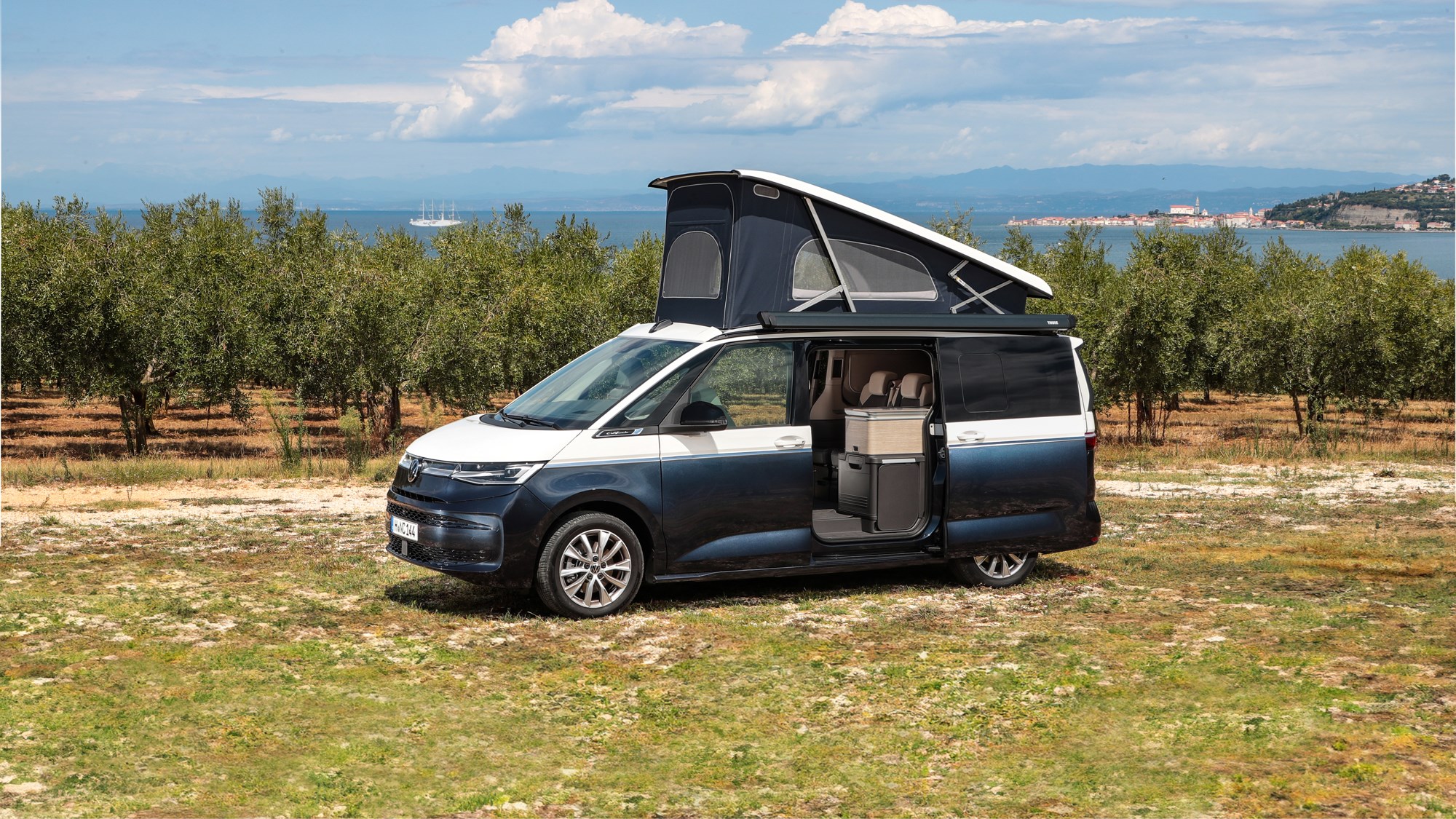
As well as keying-up a more interesting contest between the new California and the new Transit Custom Nugget (Ford’s rival, still based on the van), the Multivan fundamentals also promise an improved driving experience and greater refinement. Ground the previous California has been steadily losing to the Mercedes-Benz V-Class Marco Polo.
The second major upgrade is the availability of a petrol-electric plug-in hybrid drivetrain for the first time. And in an MQB premier, it’s here combined with 4Motion all-wheel drive. Or at least it will be, as the PHEV doesn’t actually arrive until later in 2024. Hence I’ve been driving a 148bhp TDI on this initial occasion.
The final major change is particularly significant for British buyers: the Multivan structure has two sliding side doors, and Volkswagen wasn’t about to delete one of these for the camper. So for the first time you will be able to get out of the back on the passenger side in the UK – this despite the interior arrangements remaining the same in all markets.
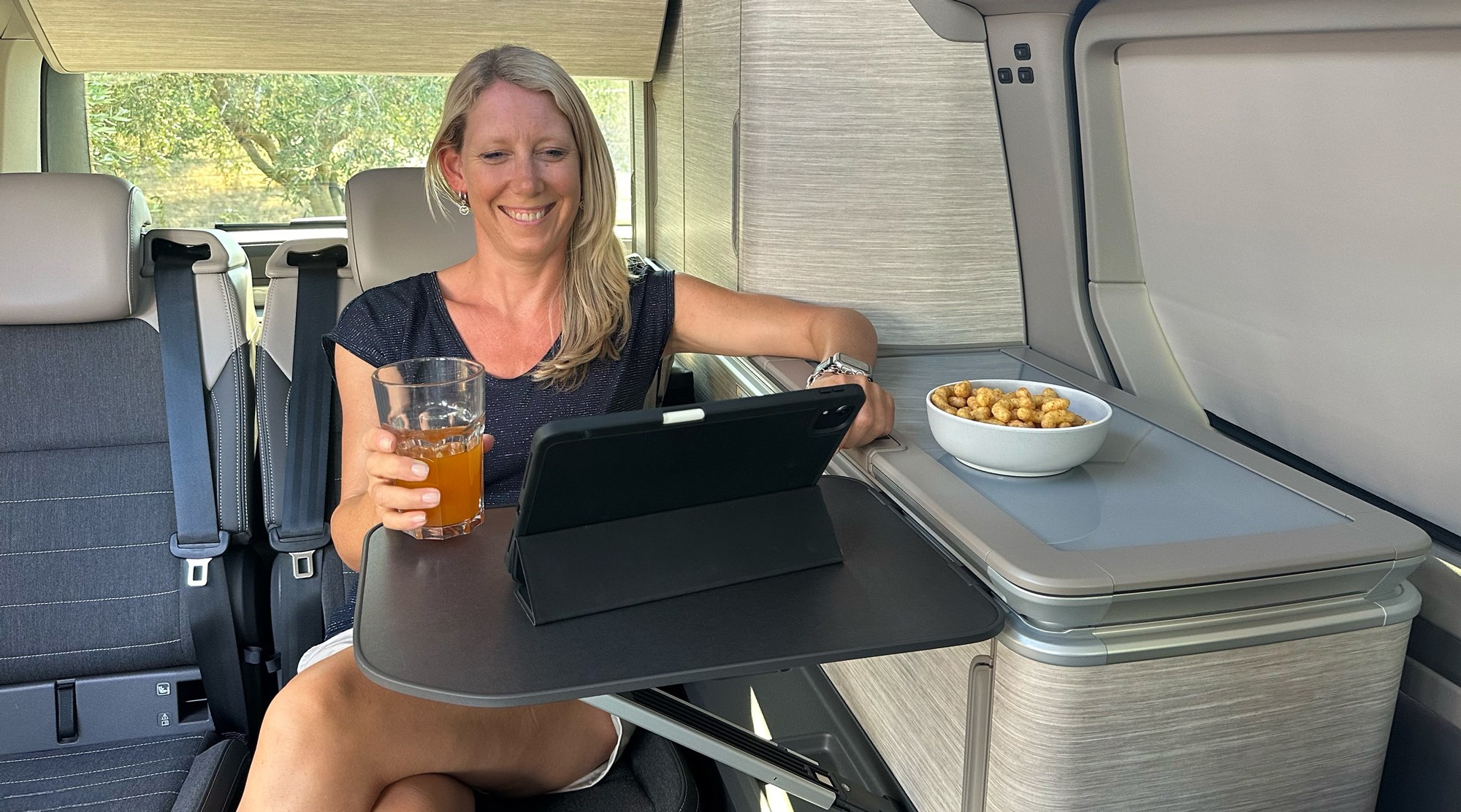
A cunning redesign of the kitchenette makes this possible. The kitchen is now more accessible from the outside as a result; there’s even a plug socket that’s only accessible with the left-hand sliding door open, in an effort to make cooking or entertaining outside of the California more straightforward.
This is why the awning has also moved to this side – though it can be fitted to either, and you could even have one on both (you’ll need to buy the second elsewhere). An increased emphasis on utilising the outdoors when establishing your mobile basecamp helps create a more spacious environment. Further enhancing VW’s choice of the longer Multivan body, which delivers more living room inside than the old short-wheelbase Transporter.
The Multivan’s full-length floor rail system means individual seats in all California models, too, specially adapted on more expensive Coast and Ocean versions to fold backwards when creating the lower bed. At 22kg each these are easy enough to move around or take out altogether if you need space inside for something else.
Other upgrades include a new camping control panel and an external shower connection for the first time – you’ll still need to upgrade to the Grand California if you want a full on-board bathroom including toilet.
What are the specs?
The out-going California 6.1 has been a diesel only affair in the UK (the pre-facelift California T6 was briefly available as a 2.0-litre TSI but no-one really fancied the fuel economy); new California buyers will have wider choice.
Starting with the forthcoming the plug-in hybrid, this will be available on all trims and exclusively combined with 4Motion all-wheel drive – so no cheaper front-wheel drive option. Using a 1.5-litre turbo petrol and a chunky e-motor, these will produce 242bhp and and promise a lengthy electric-only driving range, but this hasn’t yet been confirmed exactly.
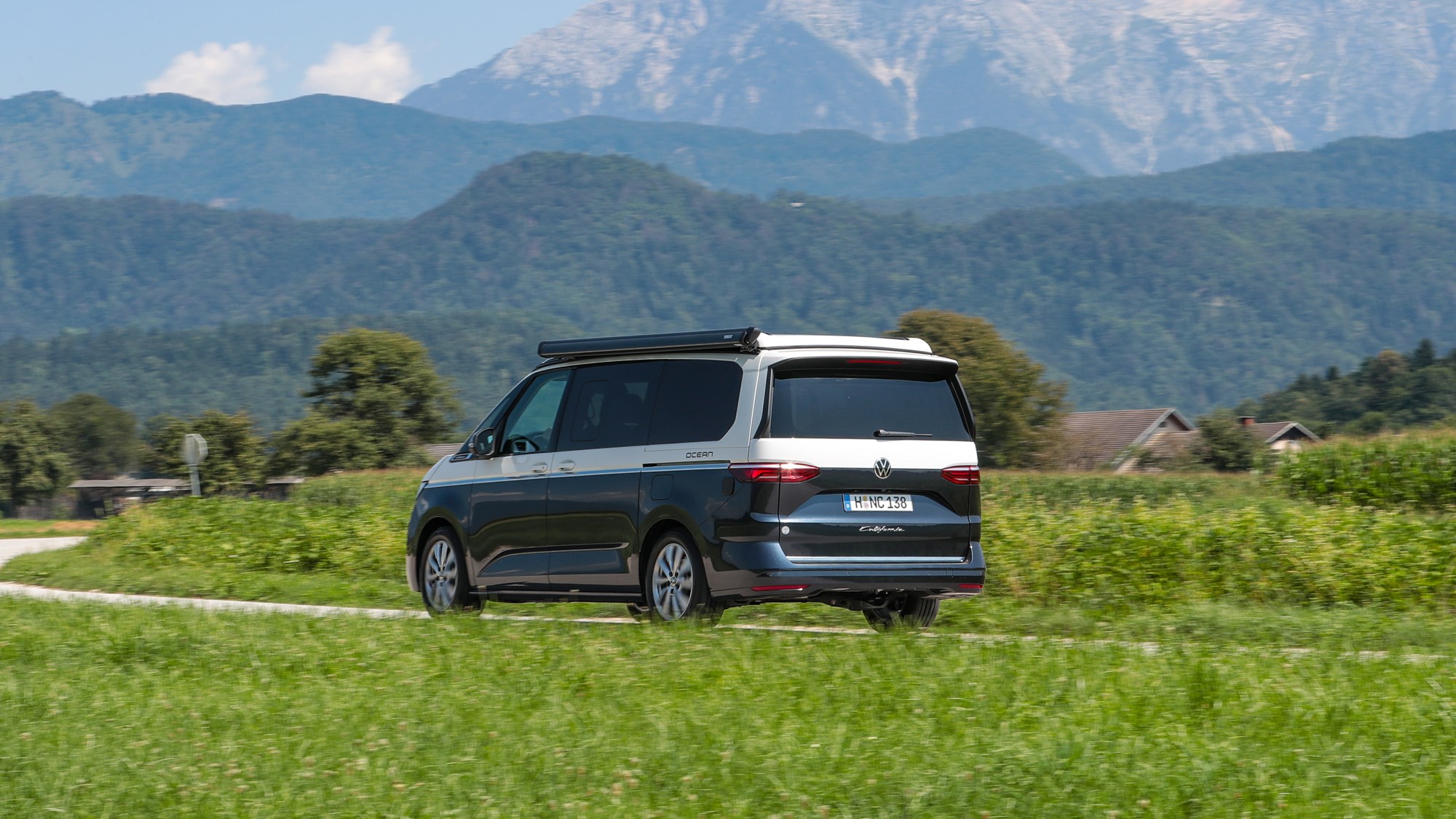
The only other option for entry-level Beach Camper buyers (there are two lesser Beach variants that aren’t coming to the UK) is the 148bhp 2.0-litre TDI turbodiesel. California Coast and Ocean buyers can choose this or a 201bhp 2.0-litre TSI turbo petrol. These non-hybrid variants will go on sale first, with the PHEV 4Motion following slightly later.
The pricier Coast and Ocean pairing also get the fully-fitted kitchen; the Beach Camper makes do with a pull-out ‘mini-kitchen’ fitted in the boot.
There are no exact UK specs – or prices – yet, but the TSI is likely to have a WLTP rating of around 30-31mpg while the TDI is set to hit around 40-42mpg. I’ve been seeing mid-30s in the Ocean TDI I’ve been driving, and that’s unsympathetically interacting with a lot high-gradient mountain roads in Slovenia.
How does it drive?
As you’d hope following the switch from light commercial vehicle to MQB, the driving experience is a lot better. The old California wasn’t awful, but it did feel decidedly top-heavy and clumsy at times, and was prone to loosing control of its driven front wheels if you had to hurry it at all.
The new California is no worse to drive than a reasonably well-sorted SUV. It doesn’t lean over too much, it puts its power down nicely, and you can make rapid progress if you need to. And that’s with just 148bhp to play with – the more powerful petrol models should give even greater satisfaction. There are no excuses for holding up traffic here.
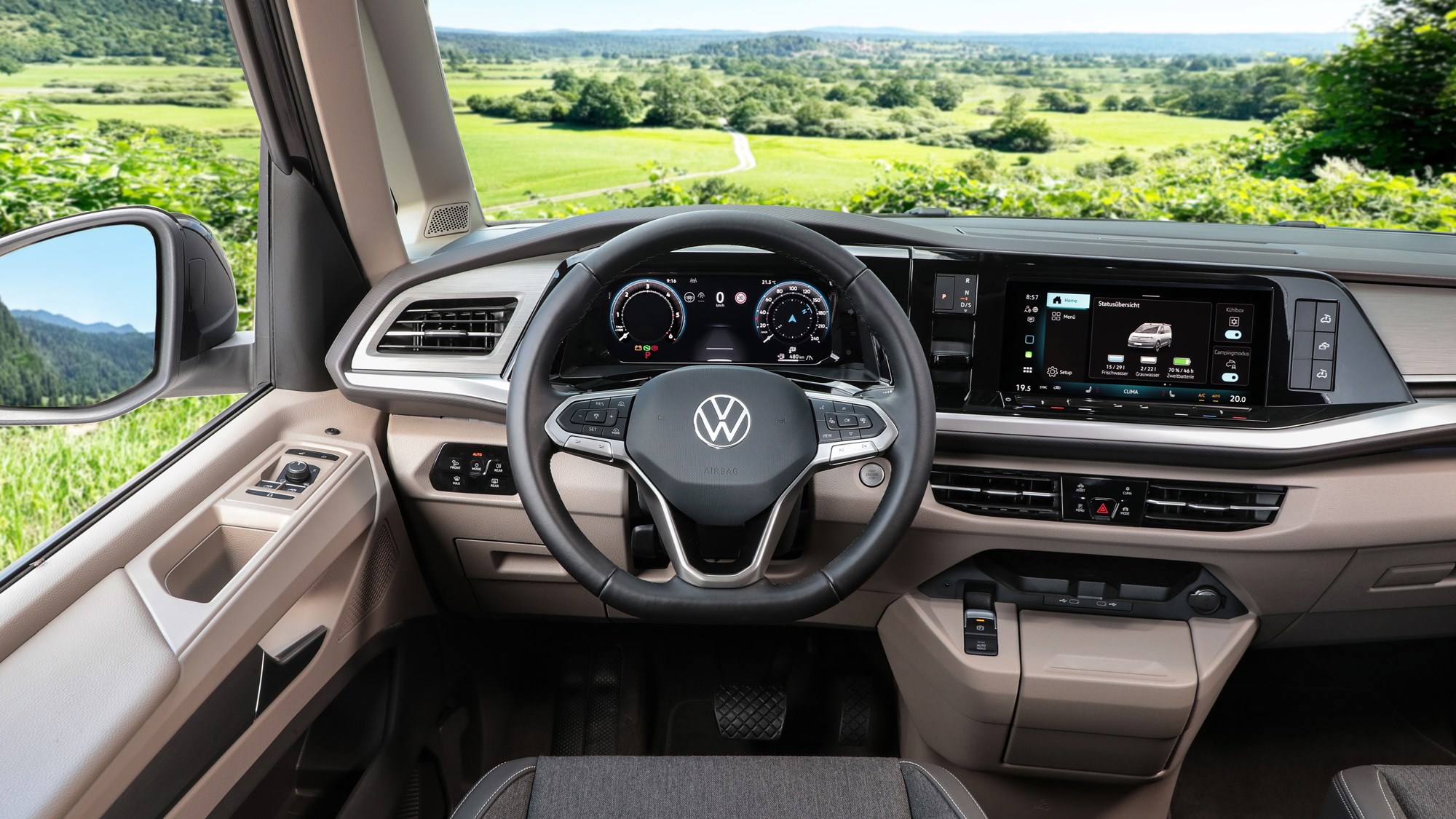
The driving position is less bus-like, and the steering is nicely weighted – yet I did occasionally still manage to get it to jam up a bit being too heavy-footed out of hairpins. The improved refinement is welcome, though there are still plenty of rattles from the cabinetry behind you.
The only thing I really wish VW could improve is the seven-speed DSG transmission. This is still too hesitant at times, then seems to overcompensate with aggression when you least need it. I might be able to overlook this more if I hadn’t recently driven the Mercedes Marco Polo, which has a supersmooth nine-speed conventional auto at its disposal.
The Marco Polo also has a 233bhp diesel and rear-wheel drive. If driver satisfaction is the kind of deciding factor you look for, the Mercedes is the campervan with the edge.
What about the interior?
Volkswagen is likely to win more people over with its clever interior – even if there are some resulting compromises that might take existing owners slightly aback.
The redesigned kitchen is very neat. It overlaps the sliding door by about 50 per cent, with a reduction in its overall footprint achieved by the use of a drawer-style fridge in place of the previous top-access chest-style unit. This change not only allows the use of that second sliding door but together with the electronic handbrake makes rotating the front seat on that side a doddle – leaving the occupant with some proper leg room for the first time.
You can also easily access the fridge from outside the van now – great for mobile parties, or simply getting home the weekly shopping. The camping chairs that live in the tailgate have taller backs than before for greater comfort.
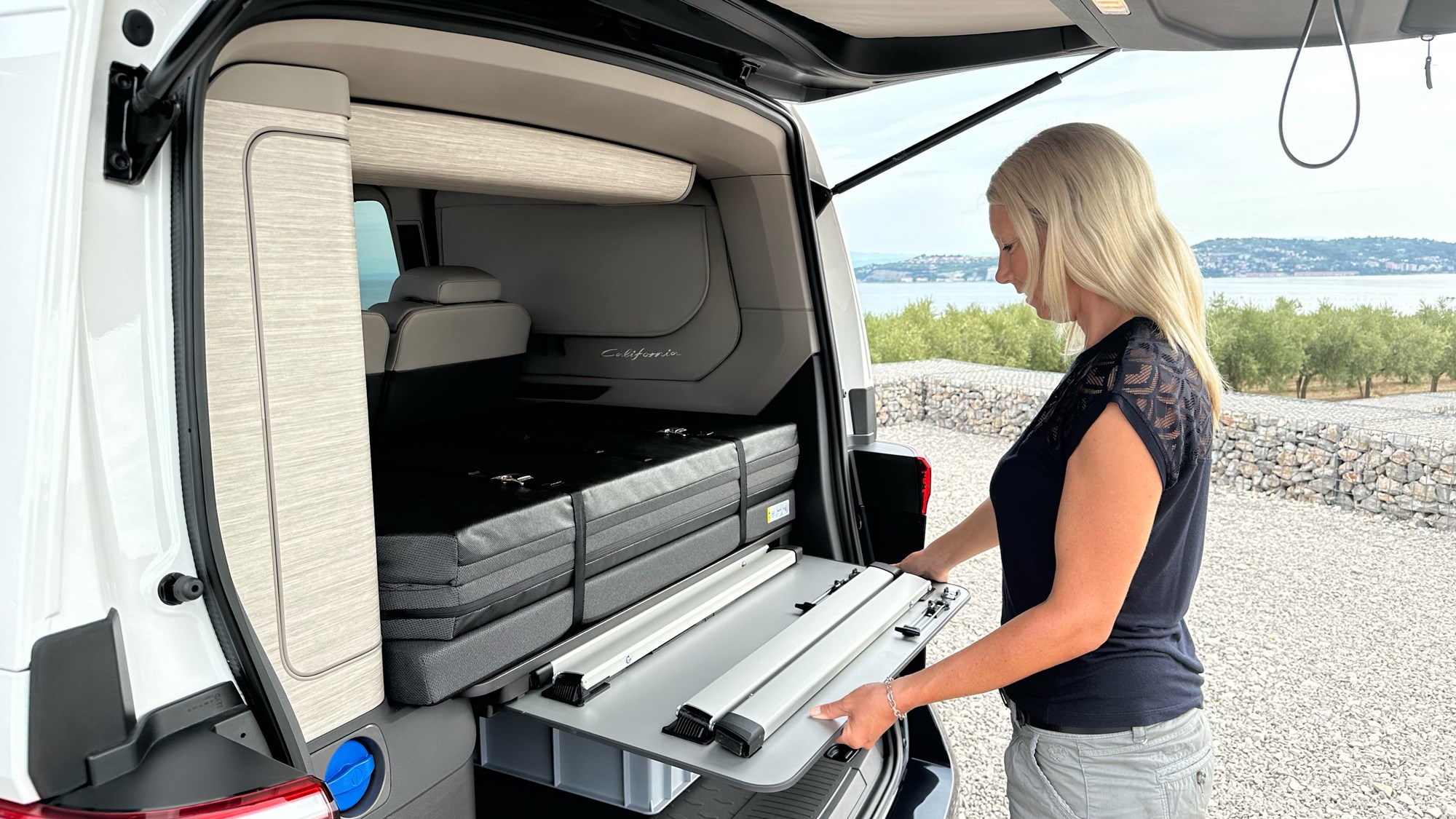
The camping table now lives under the boot shelf rather than in the sliding door, making it easier to access and allowing the California to keep both of the Multivan’s rear door pockets. However, there’s no longer a second full table on the inside – instead you get a multi-position worksurface and the camping table doubles up for cabin duty when required.
I’ve covered the flexibility of the individual rear seats already, but the downside of these is reduced under-seat storage. With a compressed kitchen cupboard count as well, you may face a bit of a conundrum about where to stash some of your kit. I reckon most owners will be up for the challenge in exchange for the advantages the revised layout brings instead.
Sleeping is for four, in a two up, two down formation, as is traditional. The top bed remains the premier choice, with its sprung base, but you still have to climb the front seats to get there. And even with the springs it’s not the most cossetting experience if you’re a side sleeper. First world problems, and all that.
There are built-in blinds for the rear windows, magnetic ones for the front doors and a new design that requires a little assembly for the windscreen. This is worth it, because it blocks the light better; the front items are all quilted and double-sided, helping to manage heat.
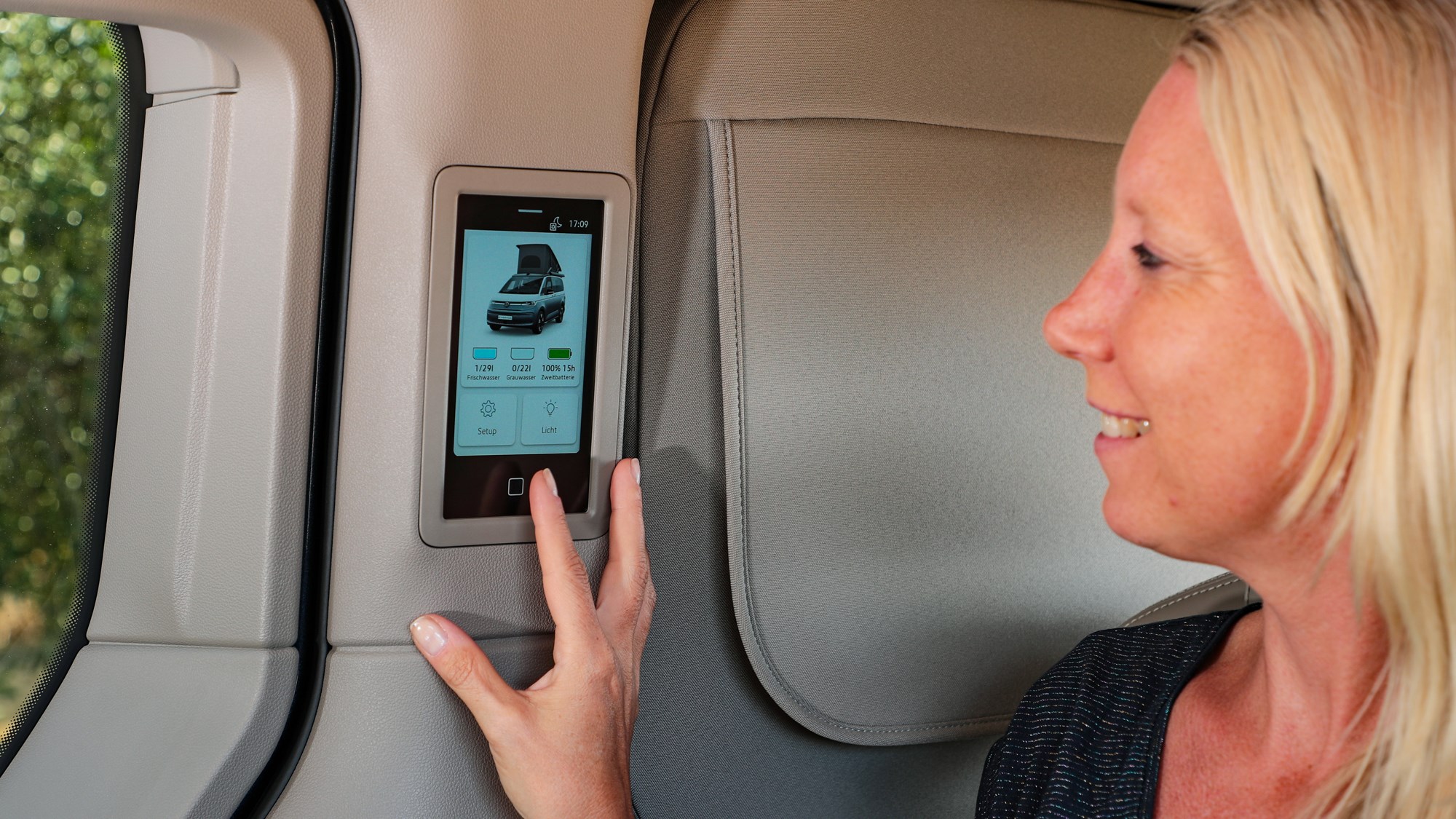
The electrically operated hydraulic roof of the Ocean model I’ve been tested is quieter than before – great if you’re arriving late at a campsite – and the zipped openings are larger. Meanwhile the interior lights can be controlled in three different ways, but crucially all have a kill-switch feature. Double-tap any of them individually and they all turn off. Useful if you’re already in bed and have forgotten to extinguish an otherwise out of reach bulb.
The new camping panel built into the pillar nearest the rear seats is a nice touch, but feels a little slow in operation. All of its functionality is replicated in the main infotainment (updated but still a little buggy, sadly) and a smartphone app, so you have choices. There are plenty of power sources, and large leisure batteries that should keep you going for a couple of nights if you aren’t at a campsite with a hook-up.
Before you buy (trims and rivals)
Three trims in the UK: Beach Camper (with the mini kitchen), Coast (with full kitchen), and Ocean (recycled seat fabric and more creature comforts, such as heated front seats, additional storage and an auxiliary heater). Using the Multivan platform means increased safety kit as well as a better driving experience. No issues with any of it so far, and the lane-keeping is easy to disable.
A word about rivals. The incoming Transit Custom Nugget – also due in the UK before the end of 2024 – has the same alternative interior layout as its predecessor, giving buyers a proper choice. Expect lower pricing, but also a lower standard of finish. I’d not expect many California fans to jump ship.
The Mercedes Marco Polo is a bigger problem for VW. It offers UK buyers less choice, in that there’s one engine and one trim, plus an optional AMG styling package. But as well as being good to drive, it’s well-finished and available with self-levelling air suspension. This adds to the cost of an already very expensive product, but makes life much easier when setting up to camp.
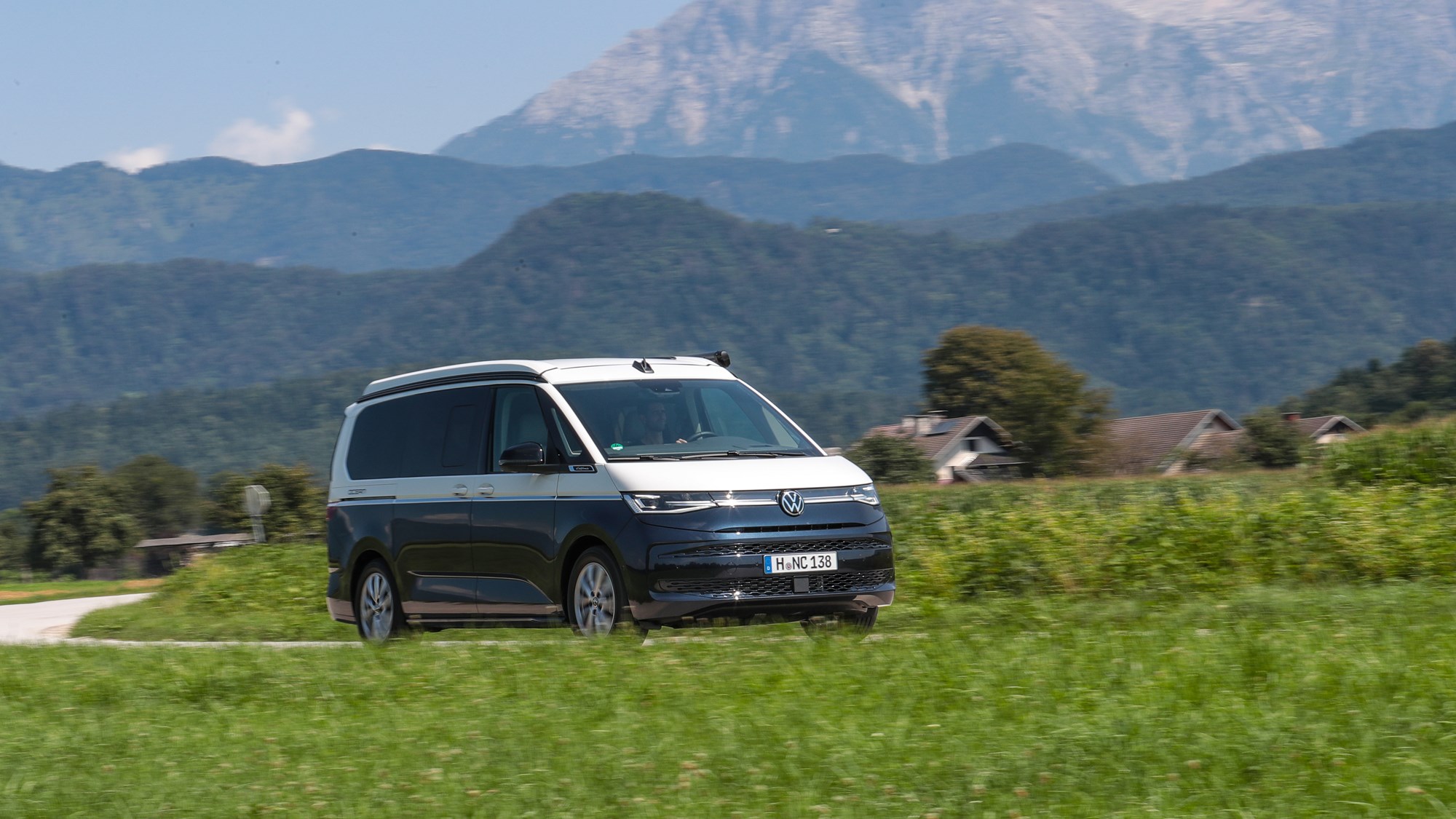
The California has no answer to this, and relies on you watching a set of digital gauges to judge how level the ground is before you bed down for the night. Sounds like a small detail, but anyone who camps a lot will understand the implications – it could be the difference between a good and bad night’s sleep.
Verdict
It’s very hard not to be impressed by the new VW California. The interior tweaks to take advantage of the Multivan platform work overwhelmingly well, and some intelligent packing will overcome the minor storage issues. It’s better to drive, sleeker to look at, and more comfortable.
The Marco Polo’s air-suspension USP requires some careful consideration, though, and we’re still waiting on UK pricing from Volkswagen. Neither of these rivals is likely to represent a bad decision, however, so if you’re in a position to choose between the two I rather envy you. Happy camping.
Specs below are for the VW California Ocean 150 TDI; pricing is estimated as UK costs are yet to be confirmed